The Tsukiji Fish Market (築地市場, Tsukiji Shijō) is the largest wholesale fish market in Tokyo, and one of the largest fish markets in the world. A memorable, though very early activity, is to see the Tuna Auction before the sun rises. The Tsukiji Fish Market will be relocating to a larger location in Toyosu expected to be complete in late 2016.
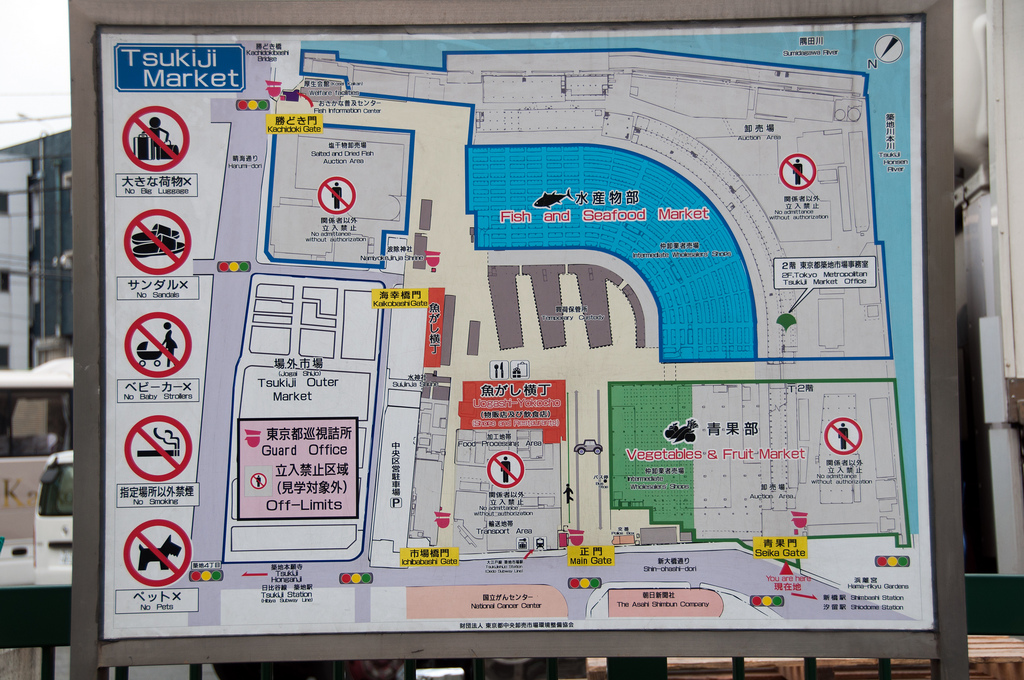
plan of the Tsukiji Fish Market
The market is the busiest between 5:30 and 8:00 a.m., and the activity declines significantly afterward. Many shops start to close around 11:00 a.m., and the market closes for cleaning around 1:00 p.m. Tourists may visit the market daily between 5 a.m. and 6:15 a.m. and watch the proceedings from a designated area, except during periods when it is closed to the public.
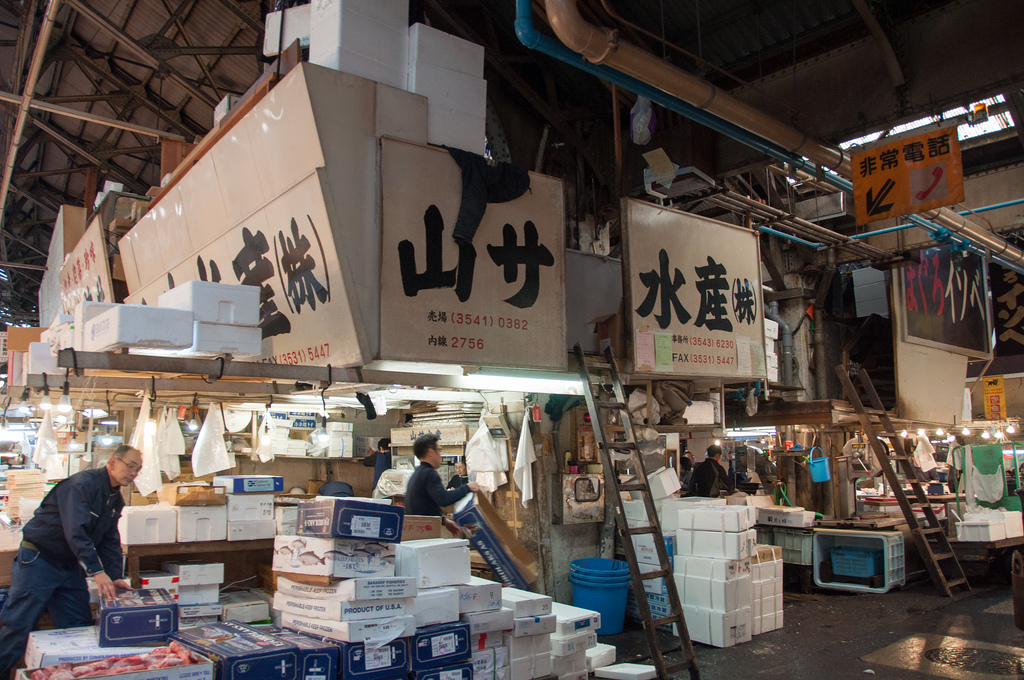
inside the Tsukiji Fish Market
The first market in Tokyo was established by Tokugawa Ieyasu during the Edo period to provide food for Edo castle (nowadays Tokyo). Tokugawa Ieyasu invited fishermen from Tsukuda, Osaka to Edo to provide fish for the castle. Fish not bought by the castle was sold near the Nihonbashi bridge, at a market called uogashi (literally, “fish quay”) which was one of many specialized wholesale markets that lined the canals of Edo (as Tokyo was known until the 1870s).
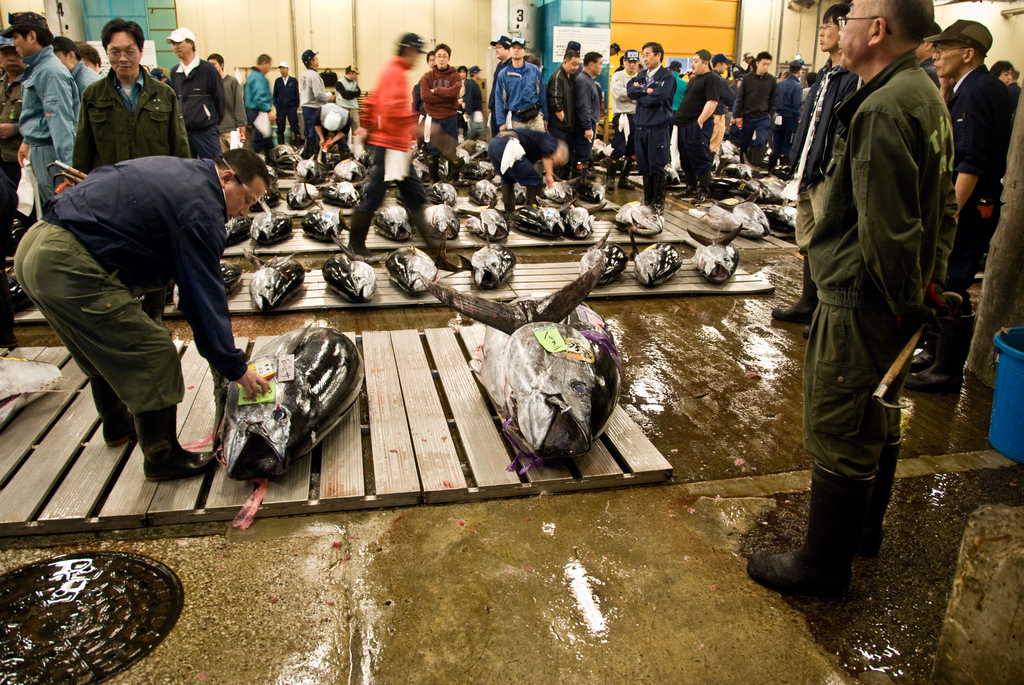
Inspecting Fresh Tuna
In August 1918, following the so-called “Rice Riots” (Kome Sōdō), which broke out in over 100 cities and towns in protest against food shortages and the speculative practices of wholesalers, the Japanese government was forced to create new institutions for the distribution of foodstuffs, especially in urban areas. A Central Wholesale Market Law was established in March 1923.
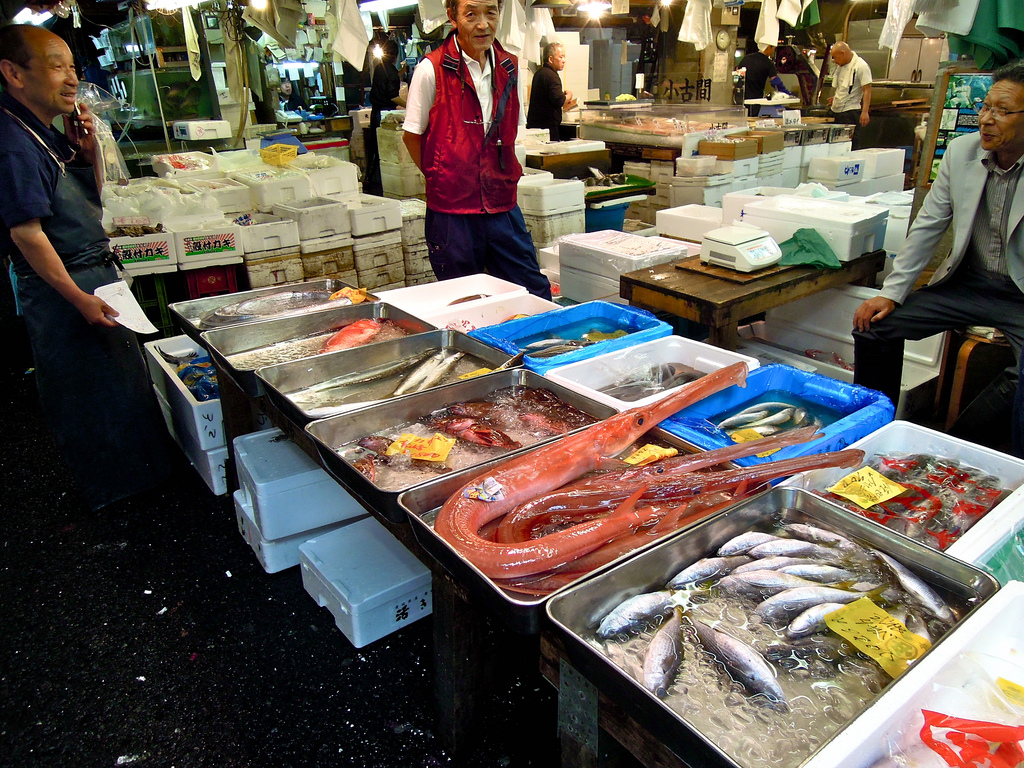
Tsukiji Fish Market Stall selling a variety of fish
The Great Kantō earthquake on September 1, 1923, devastated much of central Tokyo, including the Nihonbashi fish market. In the aftermath of the earthquake, the market was relocated to the Tsukiji district and, after the construction of a modern market facility was completed in 1935, the fish market began operations under the provisions of the 1923 Central Wholesale Market Law. Three major markets in Tsukiji, Kanda, and Koto began operating in 1935. Smaller branch markets were established in Ebara, Toshima, and Adachi, and elsewhere.
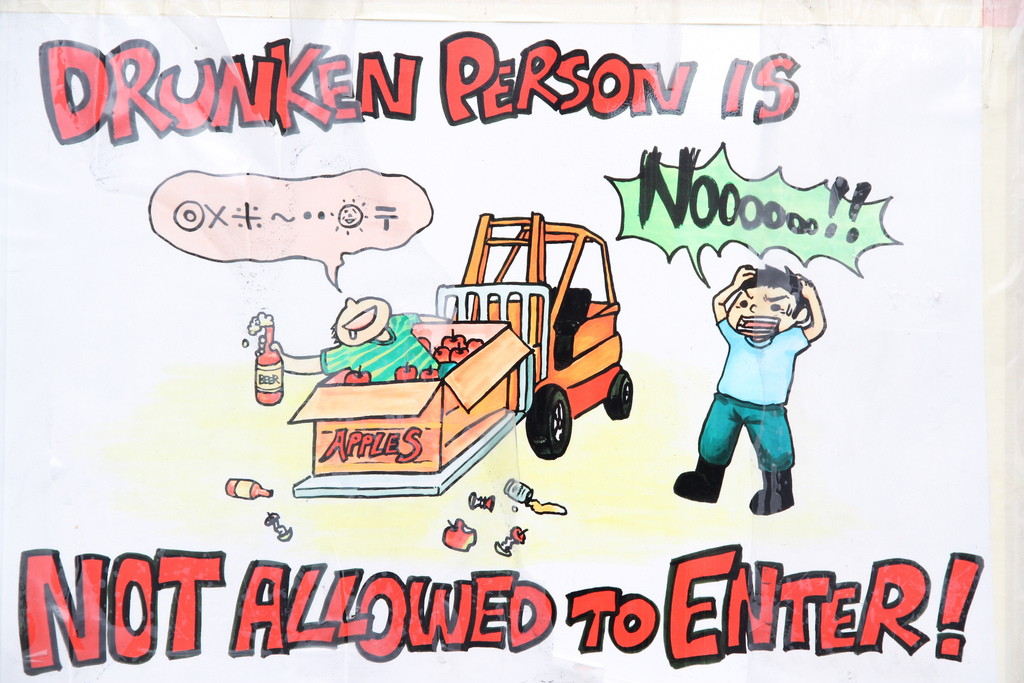
Funny sign at Tsukiji market
Visitors’ Rules for the Tuna Auction Observation at the Tsukiji Market
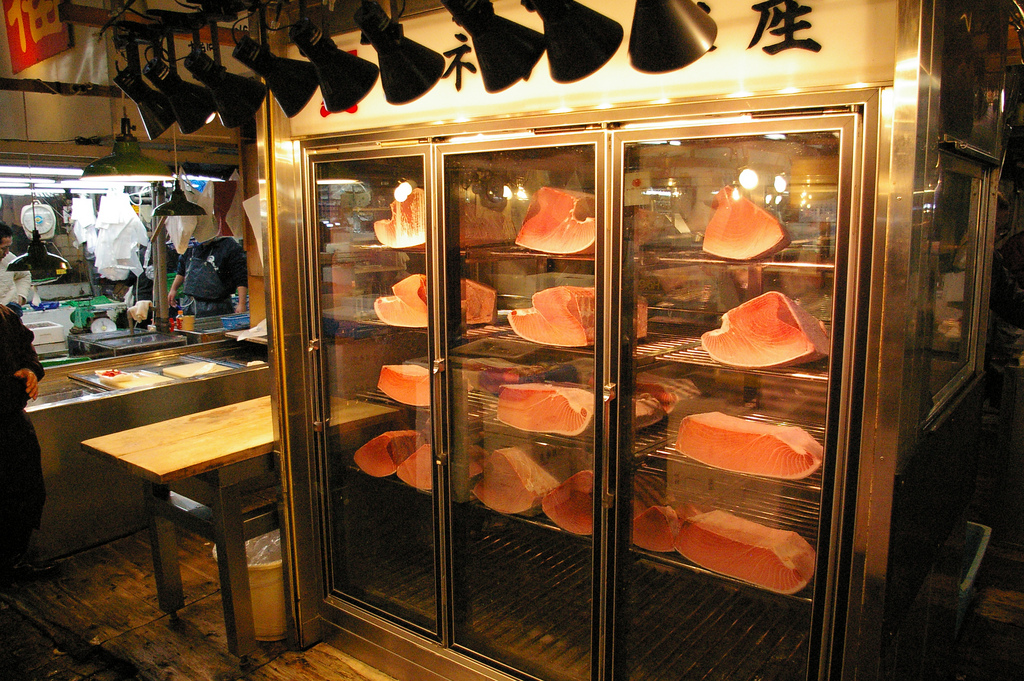
Tokyo’s Tsukiji Fish Market yummy freezer
Ok, what does this mean? Public transportation (trains and buses) do not run until 4am, when you need to get to the market to see the tuna acution. If you want to go to the Tsukiji Fish Market Tuna Auction, you have to spend the night nearby, wake up at 3:30am, and walk to the market on foot, or take a taxi. Wear appropriate footwear, no flip-flops or open-toed shoes. Also no luggage, baby strollers, large backpacks, or pets. This is serious business at Tsukiji Fish Market, and you will be kicked out if you do not follow the rules or disrupt the business flow.
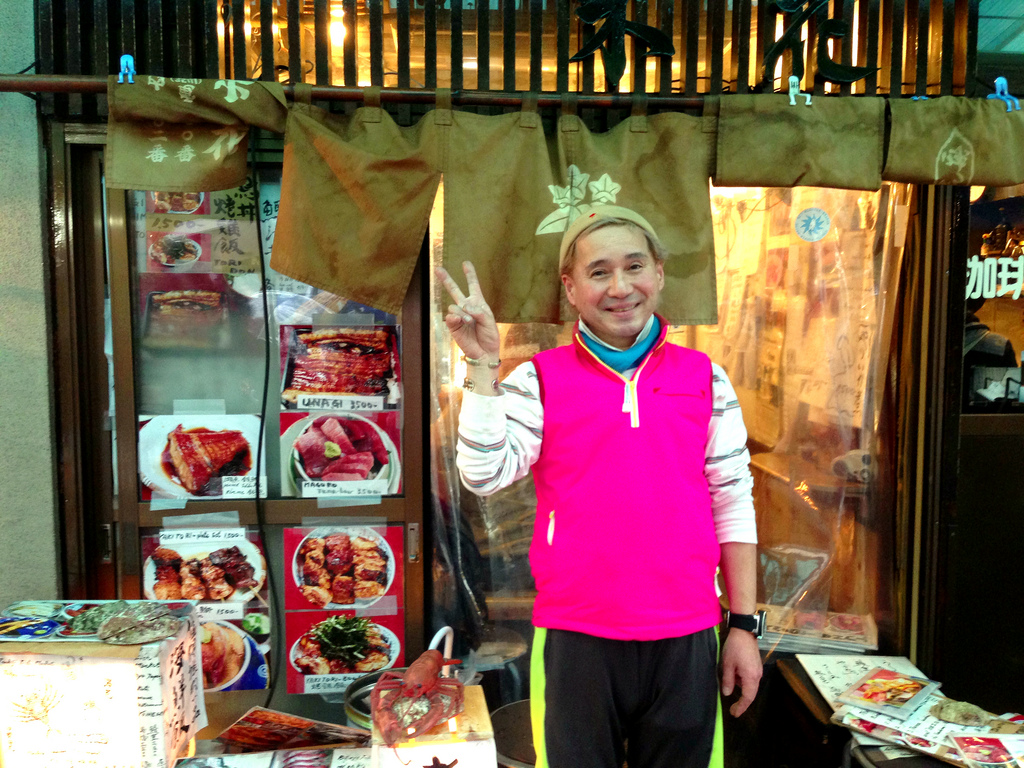
Tokyo’s Tsukiji Fish Market Food Stall
There are two distinct sections of the market as a whole. The “inner market” (jōnai-shijō) is the licensed wholesale market, where the auctions and most of the processing of the fish take place, and where licensed wholesale dealers (approximately 900 of them) operate small stalls.
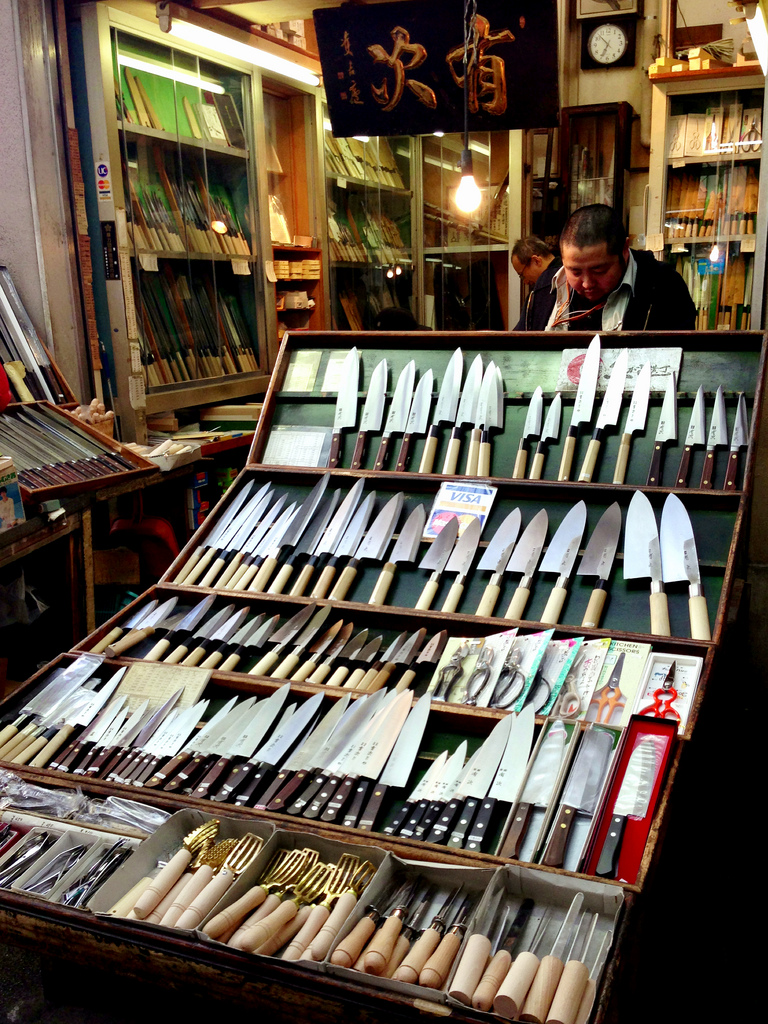
Tokyo’s Tsukiji Fish Market Knive Stall
The “outer market” (jōgai-shijō) is a mixture of wholesale and retail shops that sell Japanese kitchen tools, restaurant supplies, groceries, and seafood, and many restaurants, especially sushi restaurants. Most of the shops in the outer market close by the early afternoon, and in the inner market even earlier.
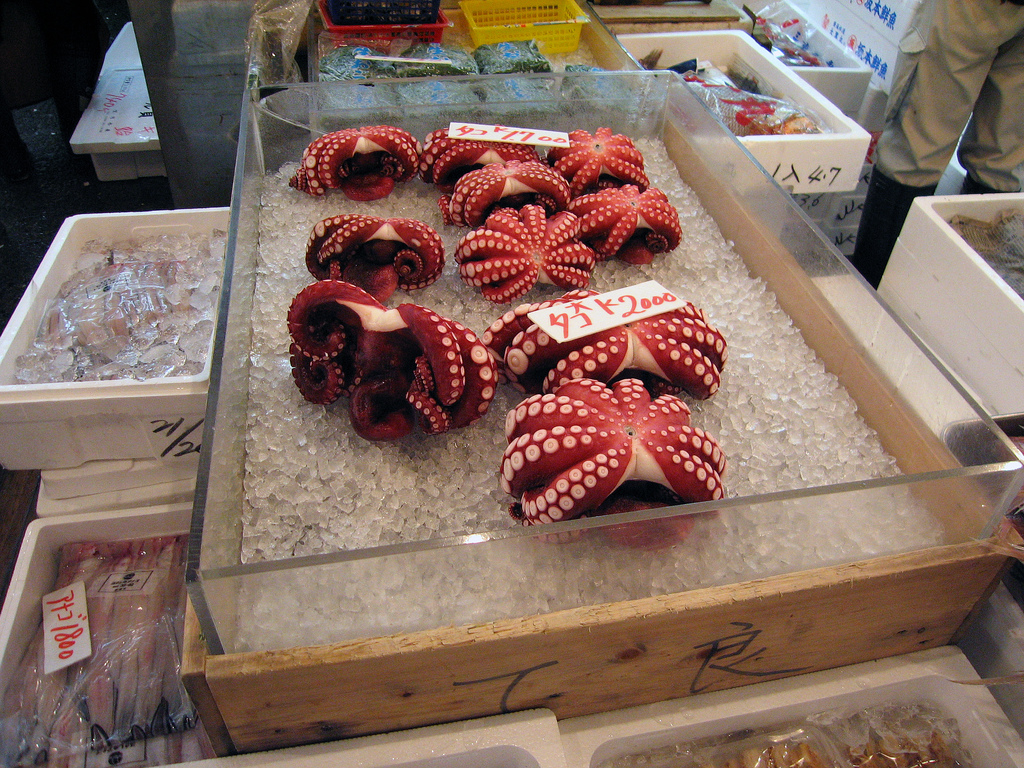
Tokyo’s Tsukiji Fish Market Octopus
If you are coming by subway, Tsukiji Fish Market can be reached by:
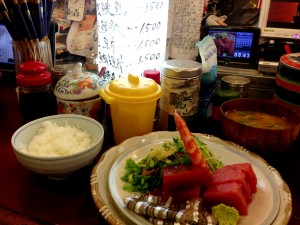
Tokyo’s Tsukiji Fish Market Sashimi Restaurant
Official site with English: http://www.tsukiji-market.or.jp/tukiji_e.htm
